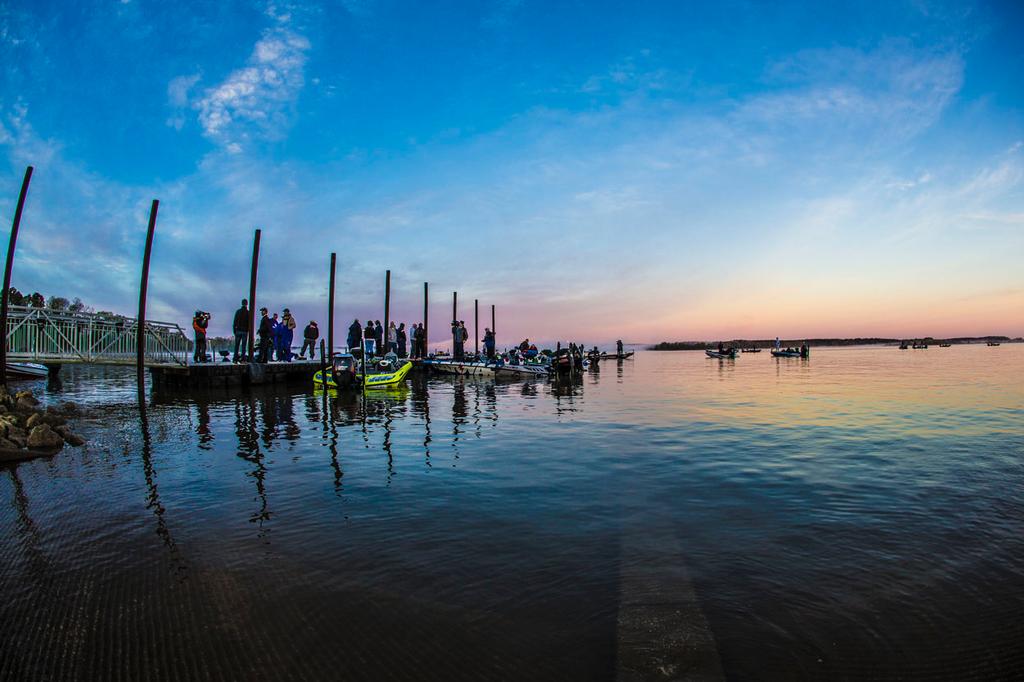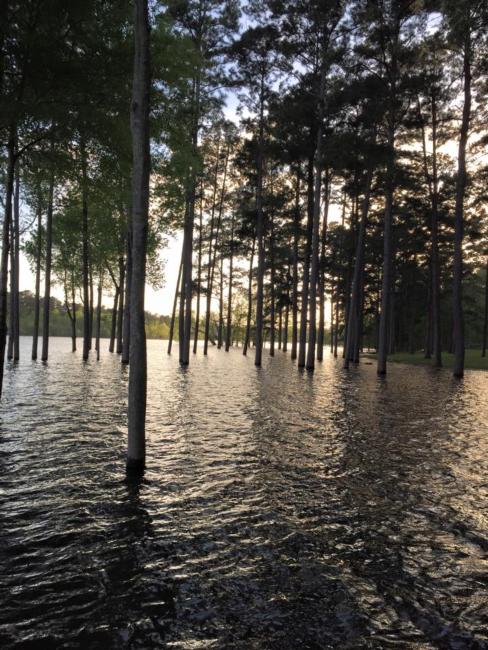High-Water Rayburn
Rayovac FLW Series pros will be dealing with a “new lake” this week at Sam Rayburn

When the Rayovac FLW Series hits Sam Rayburn April 9-11 for the second stop of the Texas Division, the story won’t be solely based on the giants that the lake is known for – it will also be about the extremely high water level. For the first time in years, Rayburn is topping her banks in a big way. Currently, the lake is about 5 feet above full pool, which is even more remarkable when you consider that the lake has been well below full pool most of the last few years.
“The only thing I know for sure is that the winner will scratch up his boat big time,” says veteran competitor Clark Reehm, who fishes the Walmart FLW Tour and guides on the lake but isn’t planning on fishing the upcoming Rayovac.
Reehm’s concern for anglers’ gel coats is based on the fact that the high water and the spawning season have many of the the fish up on the banks and quite a ways back in the woods.
We dug a little deeper into the high-water scenario on Rayburn to find out more about what anglers can expect when the tournament begins this Thursday.
The Lake
The below shot, which Keystone Light pro Jeff Sprague posted on Facebook, shows how different the lake is now compared to when the Walmart FLW Tour stopped there last spring.
Because the water has been below full pool for most of the last few years, the shoreline has grown up tremendously. Not only has the typical terrestrial vegetation done well, but the “hay grass” growing right up against or in the water has flourished too. All told, fish have a lot more cover to hide in than just some cypress trees and bushes.
The high water has also given the lake a pretty healthy stain. That doesn’t mean bed-fishing will be impossible, but the anglers will need to work to find water that is clear enough for easy looking.
Anglers will also need to monitor changes in the water level – whether it’s rising or falling is likely to impact the fishing. According to local reports, the water level was falling the last few days, but it seems to be on the rise again and there is a little rain in the forecast. Conventional wisdom says that the fish will move up and in with rising water and down and out with falling water, but it’s hard to know what fish will do. The competitor who can identify a trend in fish “direction” might have a big advantage.
The Fishing
Many of the anglers in the field will have only limited experience with Rayburn in these conditions. Reehm and Forrest Wood Cup qualifier Chris McCall, who both picked Texas stick Todd Castledine to win, acknowledge that there are a lot of changes for even Rayburn veterans to deal with.
“This is the highest it has been since 2003,” says McCall, who has won Rayovac FLW Series events twice before on Rayburn during Rat-L-Trap season. “It was a lot of fun to go back and fish in the pine trees then.”
Though McCall is looking forward to the change of pace on Big Sam, he acknowledges that there will be additional challenges.
“Because Sam Rayburn isn’t very developed, it is really hard to actually get to the bank,” he explains. “Sometimes the only way back through the brush is to follow an old roadbed or something as an entrance point.”
If Reehm and McCall are right, getting to the bank to target fish that are spawning or nearly spawning will be key, but nether pro was willing to rule out other patterns entirely.
To catch fish that are moving to and from the spawning banks, McCall says a Carolina rig on the inside grass line or targeting fish in transition in deeper brush on what was once the bank are potential techniques. He also mentioned that the shad spawn could be in play with the right weather conditions and that the flooded hay grass would be the best place to look for that pattern.
“The wild-card factor will be finding a staging place,” adds Reehm. “But that will be hard because the typical staging places are all 4 or 5 feet deeper than usual. The high water has the known contours all messed up. It is almost like a whole new event.”
Key Kickers
Plenty of limits should cross the stage if Rayburn stays true to form, but the winner will almost certainly need a couple of Texas giants each day to bump him above the rest. All told, this should be a fun one to follow, both for the cool photography that results from flooded water and because we get to see some really good anglers take on a new challenge.
